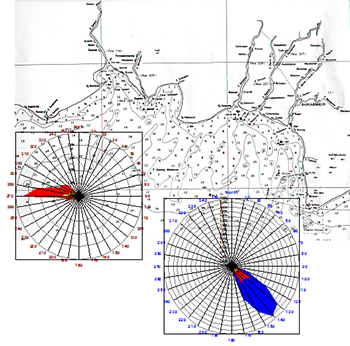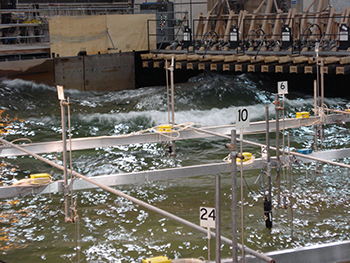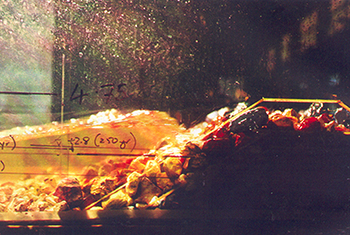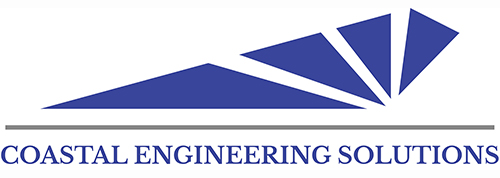Numerical Modelling
 Coastal Engineering Solutions specialises in the development of coastal studies and maintains state-of-the-art capabilities in respect to numerical modelling. We have extensive experience on coastal modelling projects with specific reference to wave studies, hydrodynamic studies and sediment dynamics.
Coastal Engineering Solutions specialises in the development of coastal studies and maintains state-of-the-art capabilities in respect to numerical modelling. We have extensive experience on coastal modelling projects with specific reference to wave studies, hydrodynamic studies and sediment dynamics.
However sophisticated computer models are a design tool only. Their reliability is determined very much by the experience and practical understanding of the people manipulating the models. Unless they are in the hands of experienced and practical coastal engineers, model results can be inaccurate or misleading. It is for this reason that all of our numerical modelling is undertaken by senior engineers having in excess of thirty years’ of practical coastal engineering experience.
Projects
- Rowes Bay / Pallarenda Coastal Processes, Qld
- Nelly Bay Coastal Processes, Qld
- Christies Beach Coastal Processes, Qld
- Adelaide Coastal Processes Study, SA
- Ashburton North – Design Wave Conditions, WA
- Albany Whaleworld Coastal Processes & Foreshore Management, WA
- Aids to Navigation – Lads Passage and Fairway Channel, Qld
- Dampier Wave Study, WA
- Portland Coastal Processes Study, Vic (no link)
- Geraldton Port Enhancement, WA
- Esperance Port Enhancement, WA
- Clifton Beach South – Foreshore Protection, Qld
- Bastion Point Boat Ramp, Vic
Physical Modelling
 One of our key areas of expertise is in the optimisation of coastal structures through physical modelling. Physical models constructed and operated at a reduced scale offer an alternative for examining coastal phenomena that are presently beyond the analytical skills of numerical models. Accordingly the use of physical models allows the user to determine accurate design solutions in areas where otherwise conservative assumptions would need to be made. In this way physical models can usually offer a client considerable savings in the ultimate capital cost of a project.
One of our key areas of expertise is in the optimisation of coastal structures through physical modelling. Physical models constructed and operated at a reduced scale offer an alternative for examining coastal phenomena that are presently beyond the analytical skills of numerical models. Accordingly the use of physical models allows the user to determine accurate design solutions in areas where otherwise conservative assumptions would need to be made. In this way physical models can usually offer a client considerable savings in the ultimate capital cost of a project.
Design optimisation can take the form of flume modelling of rubble mound structures (e.g. breakwaters, seawalls); the optimisation of structure types to meet budgetary restraints; and the study of wave forces on structures. It is often not appreciated that the relative cost of undertaking physical modelling of coastal structures is minor when compared to the expense of an over-designed structure, or a structure that requires frequent repair.
 The successful development of a physical model for coastal engineering projects can be complex, and often the designers experience is the single most important factor contributing to the success of modelling outcomes. Coastal Engineering Solutions has developed extensive expertise in the development and use of physical models – both at a small scale within a hydraulics laboratory, or large scale testing in the ocean. One such large scale project that we completed involved the construction and operation of a 1-in-5 model on the seabed between the heads at Port Phillip Bay in Victoria – for model testing of subsea pipeline stabilisation systems for Woodside Petroleum.
The successful development of a physical model for coastal engineering projects can be complex, and often the designers experience is the single most important factor contributing to the success of modelling outcomes. Coastal Engineering Solutions has developed extensive expertise in the development and use of physical models – both at a small scale within a hydraulics laboratory, or large scale testing in the ocean. One such large scale project that we completed involved the construction and operation of a 1-in-5 model on the seabed between the heads at Port Phillip Bay in Victoria – for model testing of subsea pipeline stabilisation systems for Woodside Petroleum.
Projects
- Browse LNG Development Project – Secondary Stabilisation Options, WA
- Gorgon and Jansz Gas Field Development – Secondary Stabilisation Options, WA
- Batu Hijau Pipe Launch, Indonesia
- Batu Hijau Shoreline Crossing – Indonesia
- TSEP North Rankin – Secondary Pipeline Stabilisation, WA
- Mallacoota Breakwater Optimisation of Armouring, Vic
- Evercrest Whitecove Resort Development – Philippines
- Newport Waterways – Canal Edge Stability, Qld
- Airlie Beach Lagoon Seawall, Qld
- Coastal Road Protection, Samoa

